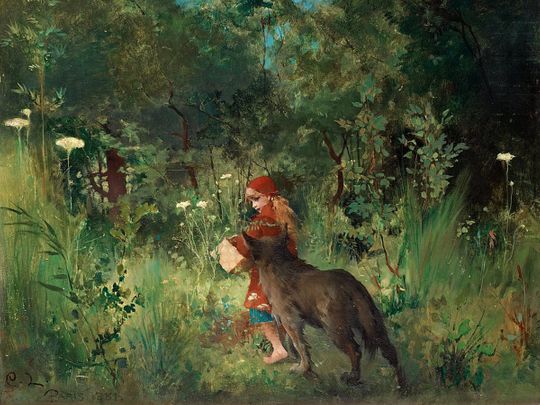
You likely know about Cinderella, Snow White, and the Little Mermaid – all folklores that have become household names. But there are many other folk and fairytales out there that are less well known.
Click start to play today’s Crossword, which features a clue about another popular tale, Beauty and the Beast.
Generations of parents have spun tales for their children, with messages that include moral lessons or the concept that good defeats evil in the end. While some became part of literature and film, and found fame, other weirder, quirkier stories have been left behind. Here, we highlight a few of these less famous folktales:
1. The Three Spinning Women
This is a story by the German brothers Jacob and Wilhelm Grimm, who brought the world Rapunzel, Little Red Riding Hood, Cinderella, and other tales. The story centres around a lazy girl who doesn’t want to work on her spinning wheel. The queen passes by her home and sees her crying, so she stops and asks why. The girl was punished by her mother, who hides this fact from the queen and instead tells her that her daughter actually loves spinning but is too poor to afford flax. The queen then offers to give her a houseful of flax, and promises to marry her to her oldest son if she is able to spin it all in just three days. The girl’s mother agrees on her behalf, but the girl remains stubborn – she just doesn’t want to work. Luckily for her, three old crones decide to help, if she invites them to her wedding. Et voila – she lives happily ever after, having never lifted a finger to do any work. The moral of this lighthearted story may just be that laziness sometimes pays off.
2. Hans, Who Made the Princess Laugh
In a Norwegian tale by Peter Christen Asbjornsen, a king tries to find a solution to a difficult problem – his beautiful daughter, the princess, never laughs. So, he declares that anyone who can make her crack a smile will receive her hand in marriage, and gain half the kingdom. Many try, and they all fail. Hans, the youngest of three sons, tries his luck after his brothers strike out. Instead of going straight to the palace, he goes in search of and acquires a golden goose. Apparently, anyone who touches the goose sticks to it. Numerous passersby are fascinated by the shiny creature and try to touch it, but end up getting stuck. Hans then goes to the castle, with a trail of unfortunate hangers-on, covered in goose feathers. The princess takes one look at the entourage and bursts into laughter, and so Hans emerges the victor.
3. The Shadow
What if your shadow takes your place, and convinces the world that you’re crazy? That’s the plot of a Hans Christian Andersen story, in which a man’s shadow disappears and he begins to grow a new one. Years later, his old shadow reappears as a real person of flesh and blood. The shadow is the man’s opposite – he sees only the bad, and plots and schemes. A few days later, the man falls ill, and the shadow offers to take him to a pond that has curing properties, but only if the man becomes his shadow for some time. Ill and depressed, the man agrees, but then, the shadow meets a princess and becomes engaged. After that, it’s a race to show the princess who’s the real man. The shadow convinces everyone that the man is actually a shadow – in a dark twist of fate, the princess believes him and executes the man, and the shadow marries the princess. The moral remains – never be a shadow of yourself.
What do you think of these folktales? Play today’s Crossword and tell us at games@gulfnews.com.



